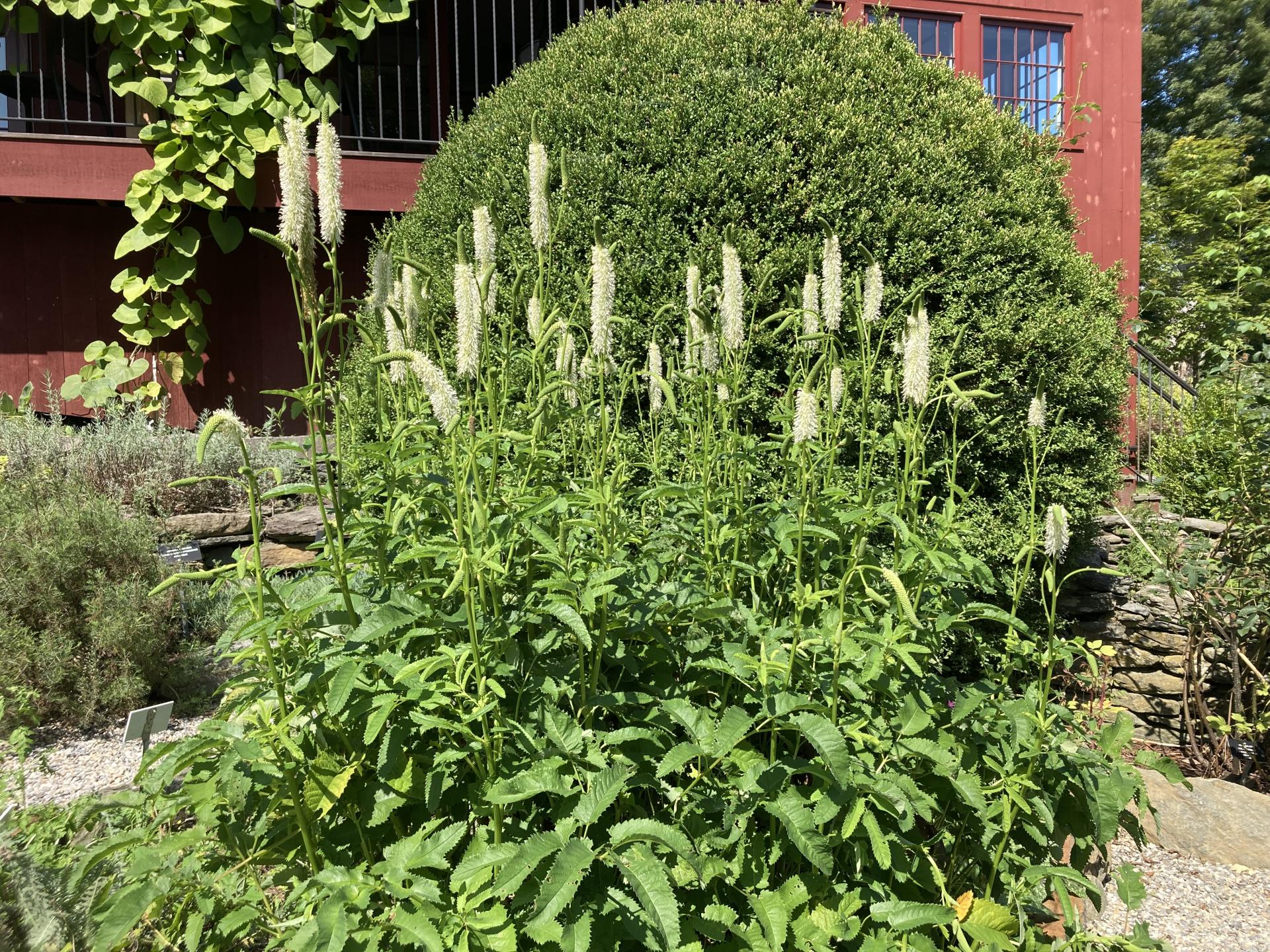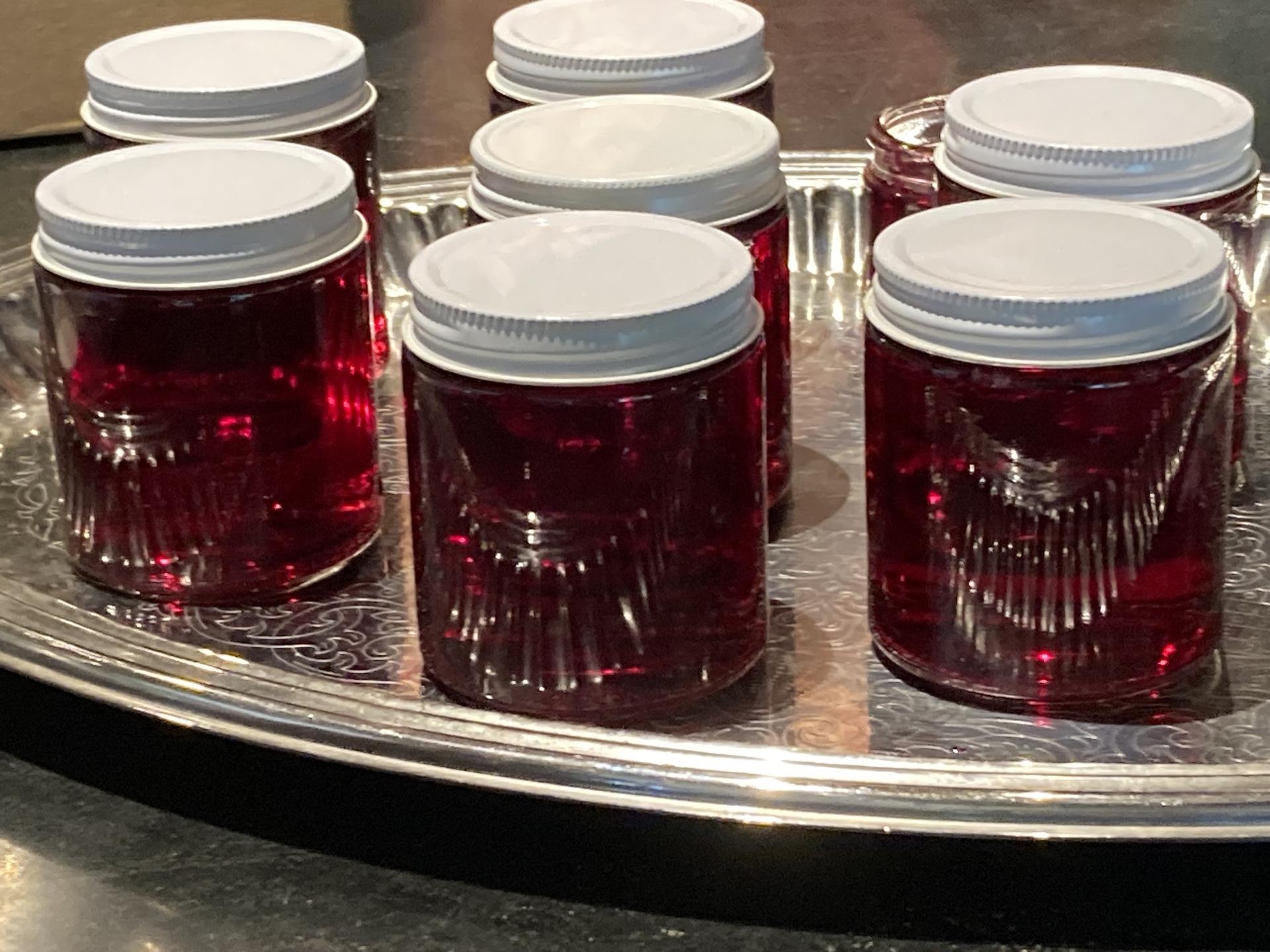You are here
Herb of the Week: Burnet
Herb of the Week: Burnet
by Barbara Smith
This week’s article will focus on two species of the genus Sanguisorba – related, but different: one large, one small: Sanguisorba canadensis and Sanguisorba minor. The hope is to acquaint you with both these members of the rose family and encourage you to find a spot for them in your garden.
The Latin name provides a clue to the plant’s history. Sanguisorba translates loosely to “blood staunching”, from which we can surmise its early uses. Rodale’s Encyclopedia of Herbs states, "Burnet is one of the most venerable of forgotten herbs, used medicinally for at least 2000 years.”
Native to North America, the Sanguisorba canadensis species grows three to five feet tall, holding creamy white flowers like bottle brushes on long stems in summer and autumn. (Check the photos above, or better still, come to the BBG Display Herb Garden near the Center House to see this beauty in bloom.) This species is a popular ornamental feature in prairie landscape garden plans. It thrives in bogs and swamps (though it grows happily in the BBG Display Garden, where conditions are drier). Nine states (not including Massachusetts) put this plant on their endangered list.
Native to Europe and parts of Asia, Sanguisorba minor grows to 18 inches tall with rounded, fine-toothed leaves and crimson tufts of flowers. The English word “burnet” refers to the color brown, the hue of the early blossoms. Also referred to as “Salad Burnet,” this species vies with borage (last week’s Herb of the Week) for the title of “happiest” of the herb plants, in that historically it was believed to drive away melancholy. In the kitchen, the lacy, dark green leaves of Salad Burnet can be substituted for a parsley garnish for fish or chicken plates. Its light cucumber flavor makes Salad Burnet a useful herb for salad dressings, to flavor vinegar, or folded into butter for cucumber sandwiches at your next tea party. Interestingly, in the letters of Thomas Jefferson, reference is made to his purchase of 6-8 bushels of Burnet seed, enough to cover 16 acres. Jefferson used it for grazing livestock and erosion control.
In the Kitchen – Bounty Continues
As our gardens are yielding quantities of everything, the Herb Associates Kitchen Team are busy producing wonderful edible treats featuring the herb bounty. Please know that as the growing season is winding down, the production of certain items is necessarily limited to what’s currently on hand.
The last of the basil was incorporated into Tomato Basil Dressing, and the late-to-flourish parsley was incorporated into Parsley Vinaigrette. Opal Basil Vinegar and Tarragon Vinegar are infusing, while jars of Opal Basil Jelly with its striking ruby color and savory/sweet flavor were prepared. The last of the shrub line, this one Yellow Peach, was bottled.
Customer favorite Harvest Marmalade was made this week with yellow tomatoes; next week, the recipe will feature orange tomatoes. This marmalade combination is always a hit.
These Herb Associates products are available at the BBG Gift Shop. Do stop by on your next visit to purchase some.
The Berkshire Botanical Garden’s Herb Associates began in 1957 and have been making and selling products for the benefit of BBG ever since. At BBG, the Herb Associates oversee a display garden and production garden, both located near the Center House. Members/volunteers meet every Tuesday morning during the late spring through mid-autumn each year, coinciding when the gardens themselves are open to the public. Members plant, weed and tend the gardens, as well as harvest and process the variety of herbs.
Help Our Garden Grow!
Your donation helps us to educate and inspire visitors of all ages on the art and science of gardening and the preservation of our environment.
All Donations are 100 percent tax deductible.





